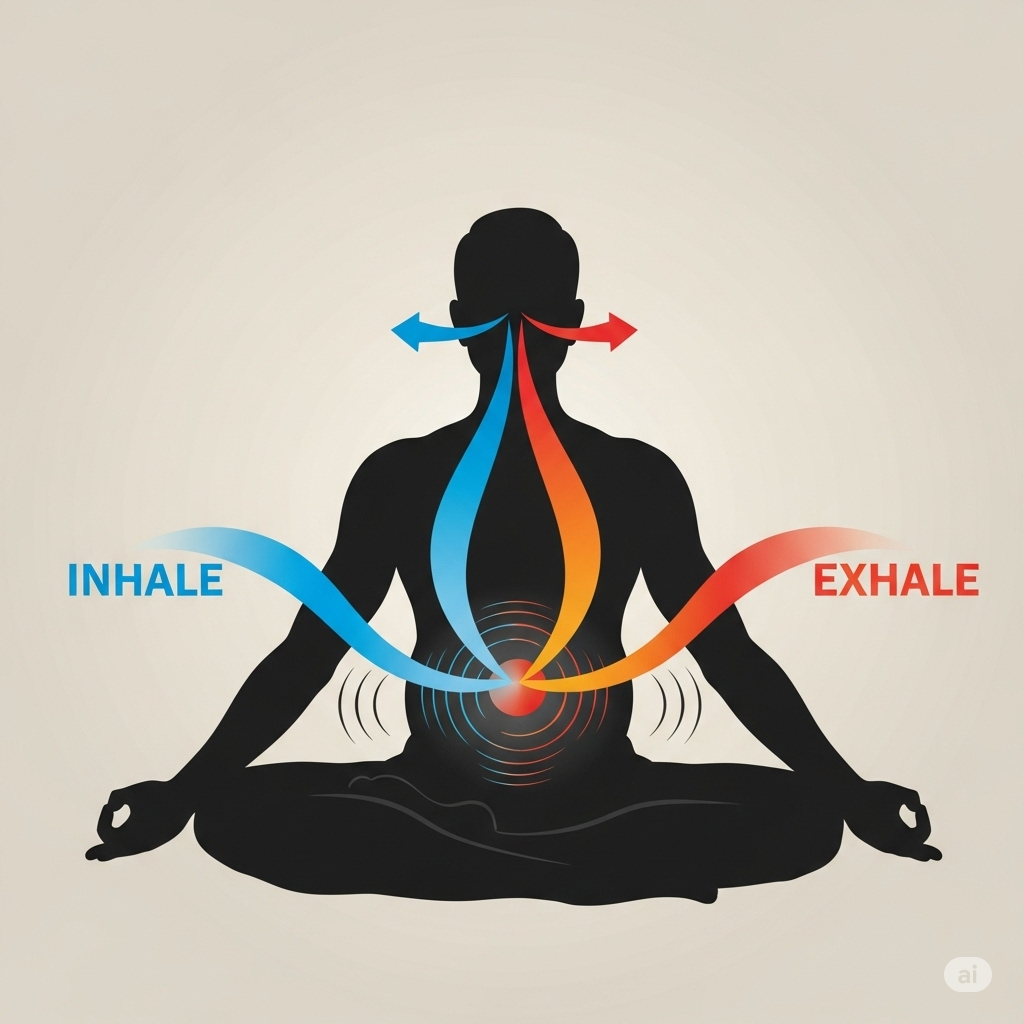School of Yoga explains kapālabhātī – (kapāla = skull + bhātī = shining)
In kapālabhātī-prāṇāyāma, the inhalation is passive, but the exhalation is active using the abdominal muscles.
Kapālabhātī-prāṇāyāma technique explained in easy steps
- First, sit comfortably in padmāsana, sukhāsana, or vajrāsana. Keep your back erect.
- Now, close your mouth. Let the tongue touch the top of the palate to close the circuit of prāṇa flow.
- Next, place your hands in the chin-mudra or chinmaya-mudra.
- Breathing in naturally, let the abdomen relax without effort or exertion.
- At the end of inhalation, push air out vigorously using the abdominal muscles.
- As a result of the pressured exhalation, there should be a feeling of slight light-headedness.
- Also, one should experience tightening of the anus due to forced exhalation.
- Importantly, repeat 20 to 50 times spread over a maximum of 2 sittings.
Understanding the benefits of this technique
- Importantly, this prāṇāyāma strengthens the digestive system and lower respiratory tract. This exercise helps combat multiple digestive ailments such as acidity, flatulence, constipation, piles, diabetes, and other lung illnesses such as asthma, and emphysema.
- Also, the rapid movement of air increases the volumetric efficiency of the lungs and heart function. The rapid exhalation through the nose helps in ejecting the phlegm, mucous and other secretions, out from the windpipe.
- In fact, this prāṇāyāma is especially useful in managing abdominal illnesses and ailments such as diabetes, gastritis, hyper-acidity, kidney and liver ailments, etc.
- Due to the rapid intake of the abdominal muscles, abdominal organs move and massage the spine creating a shock effect that results in transmission of the shock to the brain. This could result in slight light-headedness.
- Additionally, this energizes and stabilizes the central and peripheral nervous system, the sympathetic and para-sympathetic nervous system, especially the spinal nerves.
- Finally, since the spinal cord is energized, all the main nāḍi get energized also.
Hatha Yoga Pradeepika on kapālabhātī (Chapter 2, verse 35 to 36)
Kapālabhātī – when inhalation and exhalation are performed rapidly like the bellows of a blacksmith. This is called kapālabhātī which overcomes orders of phlegm.
When one is freed from obesity and phlegm by practicing the 6 acts and subsequently practices prāṇāyāma, the practitioner will achieve success without difficulty.


